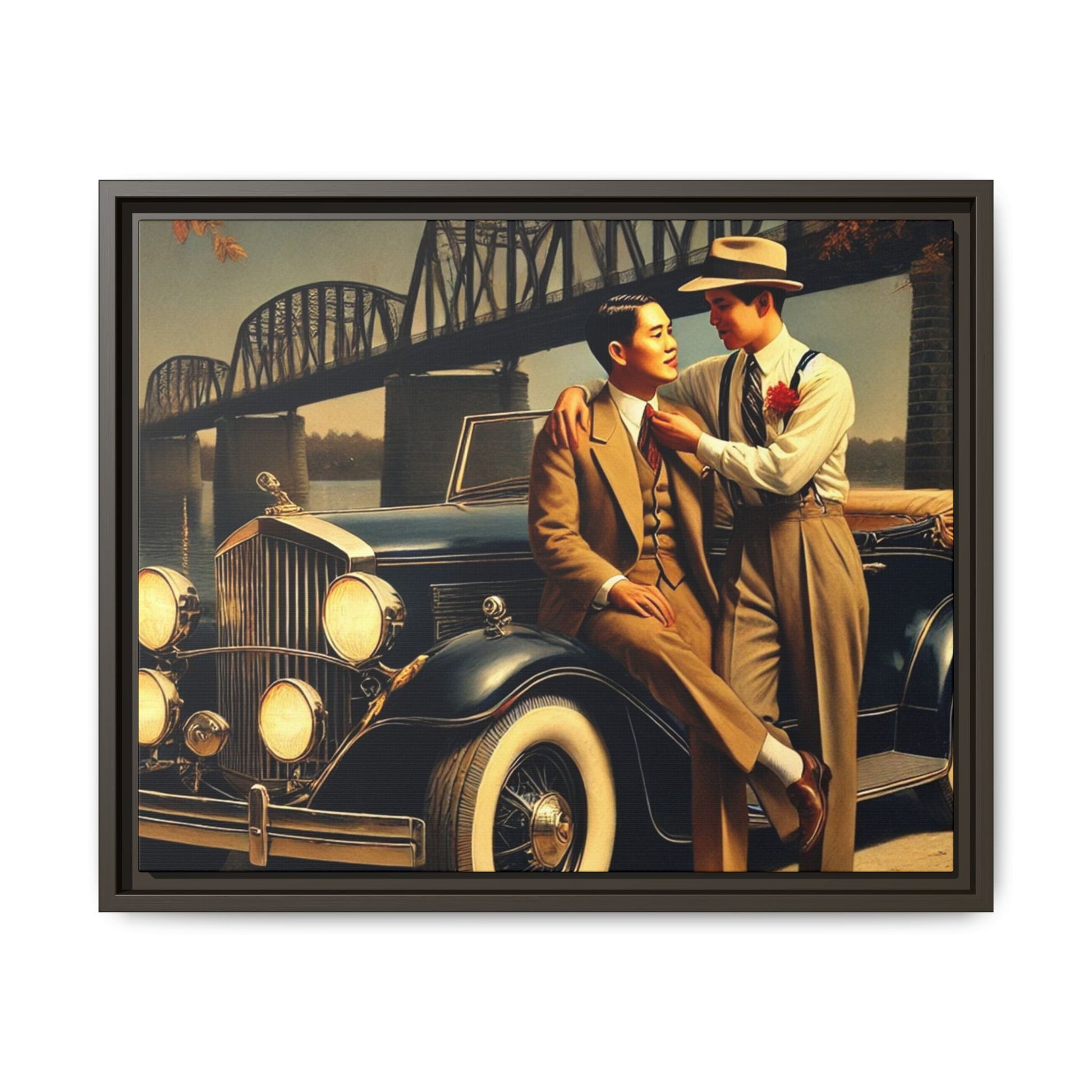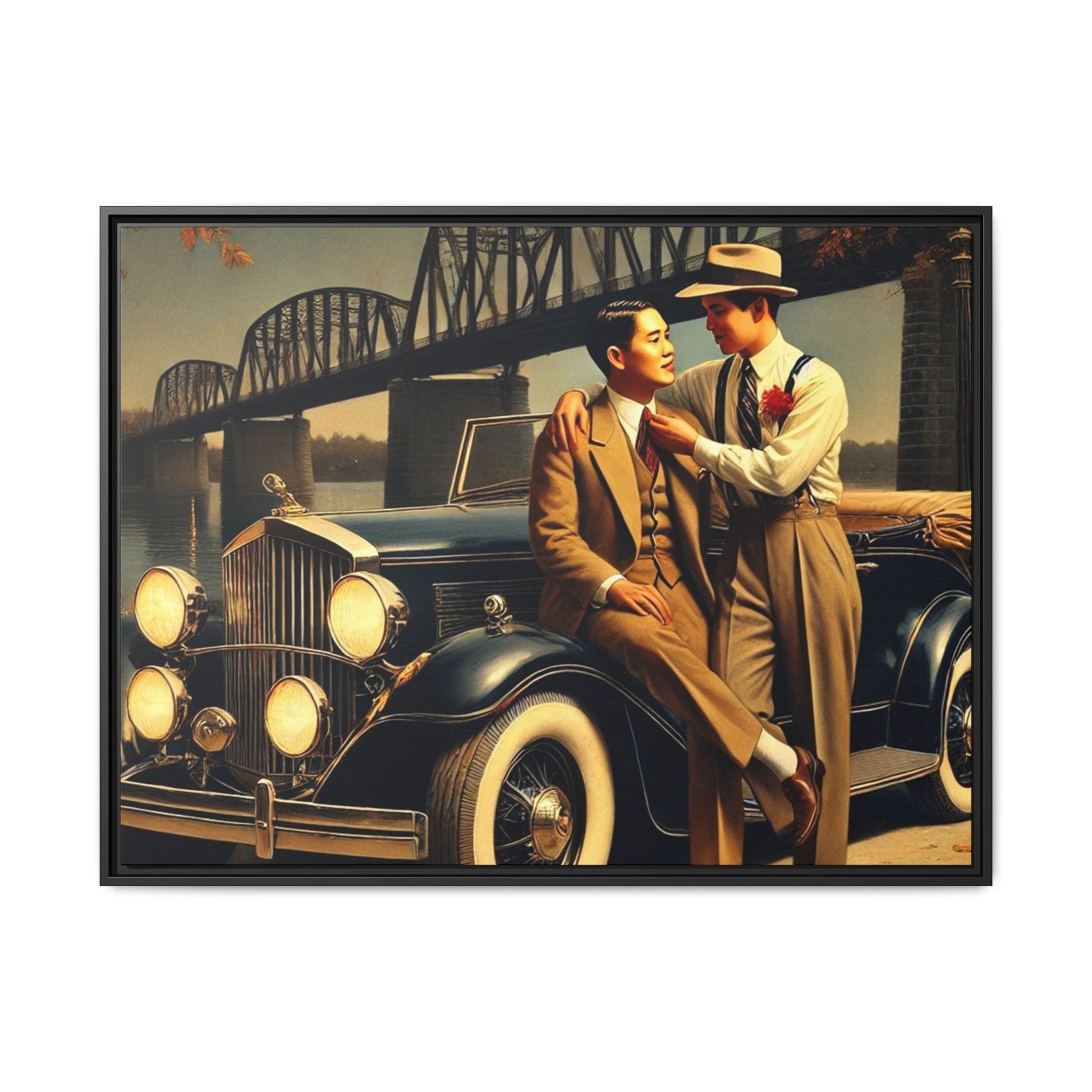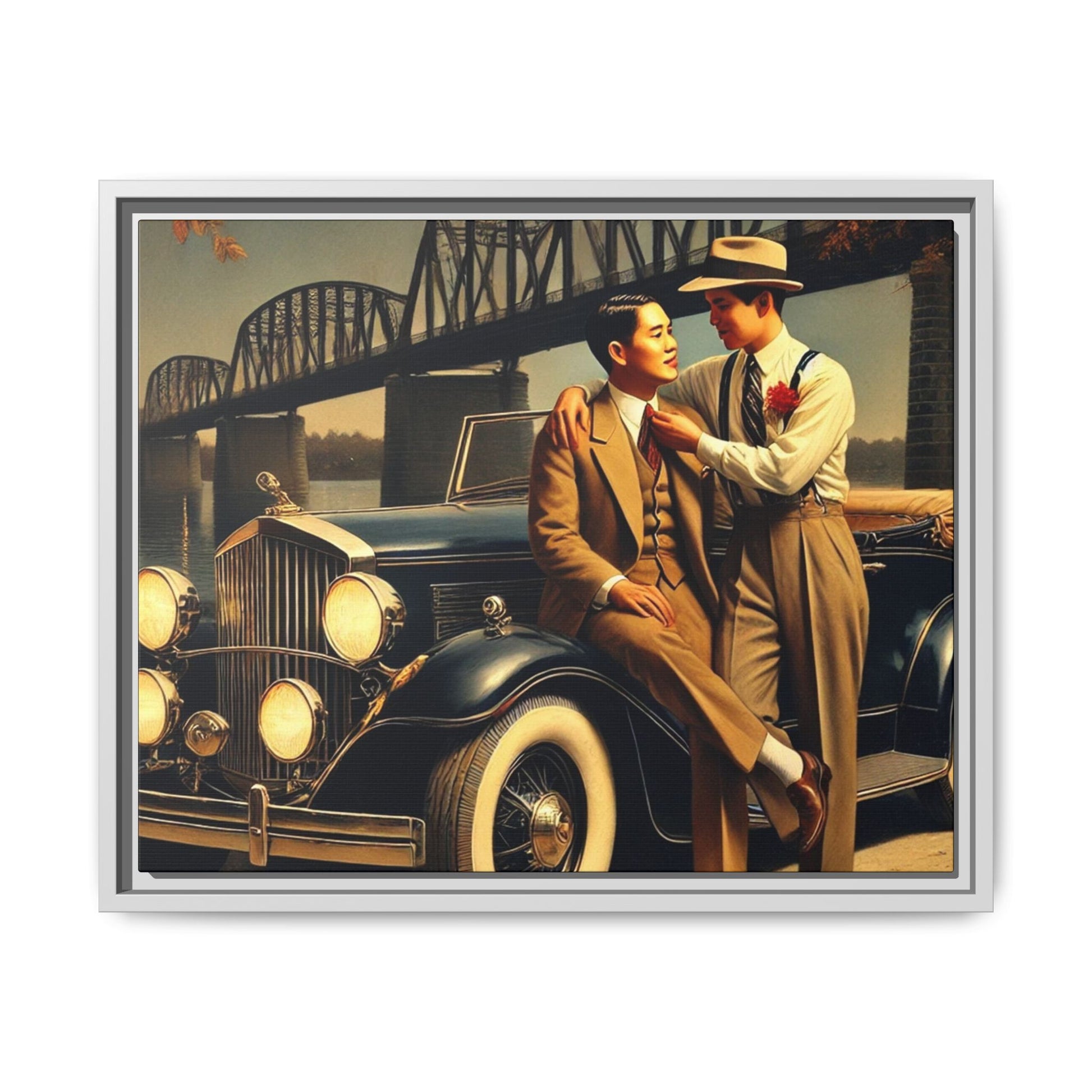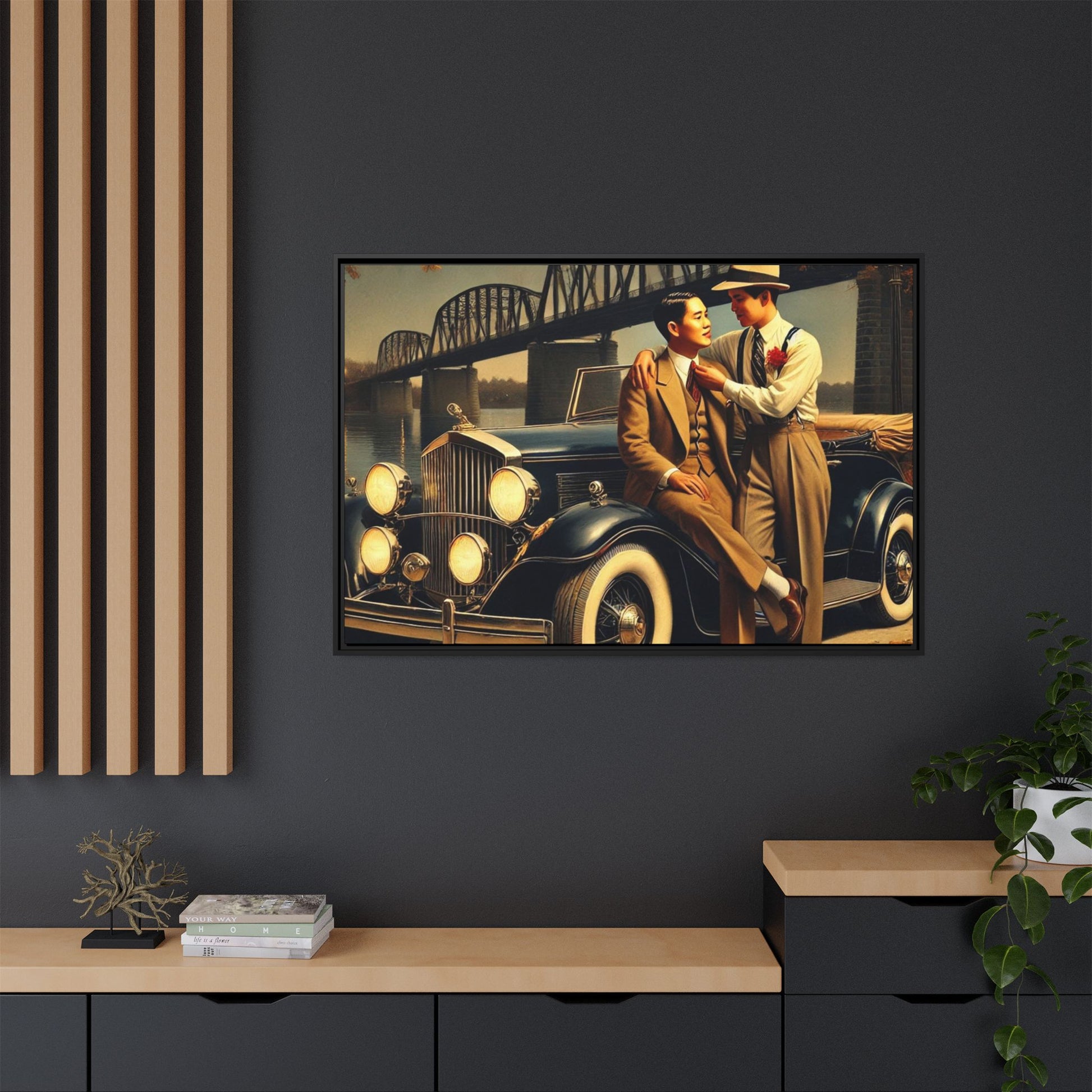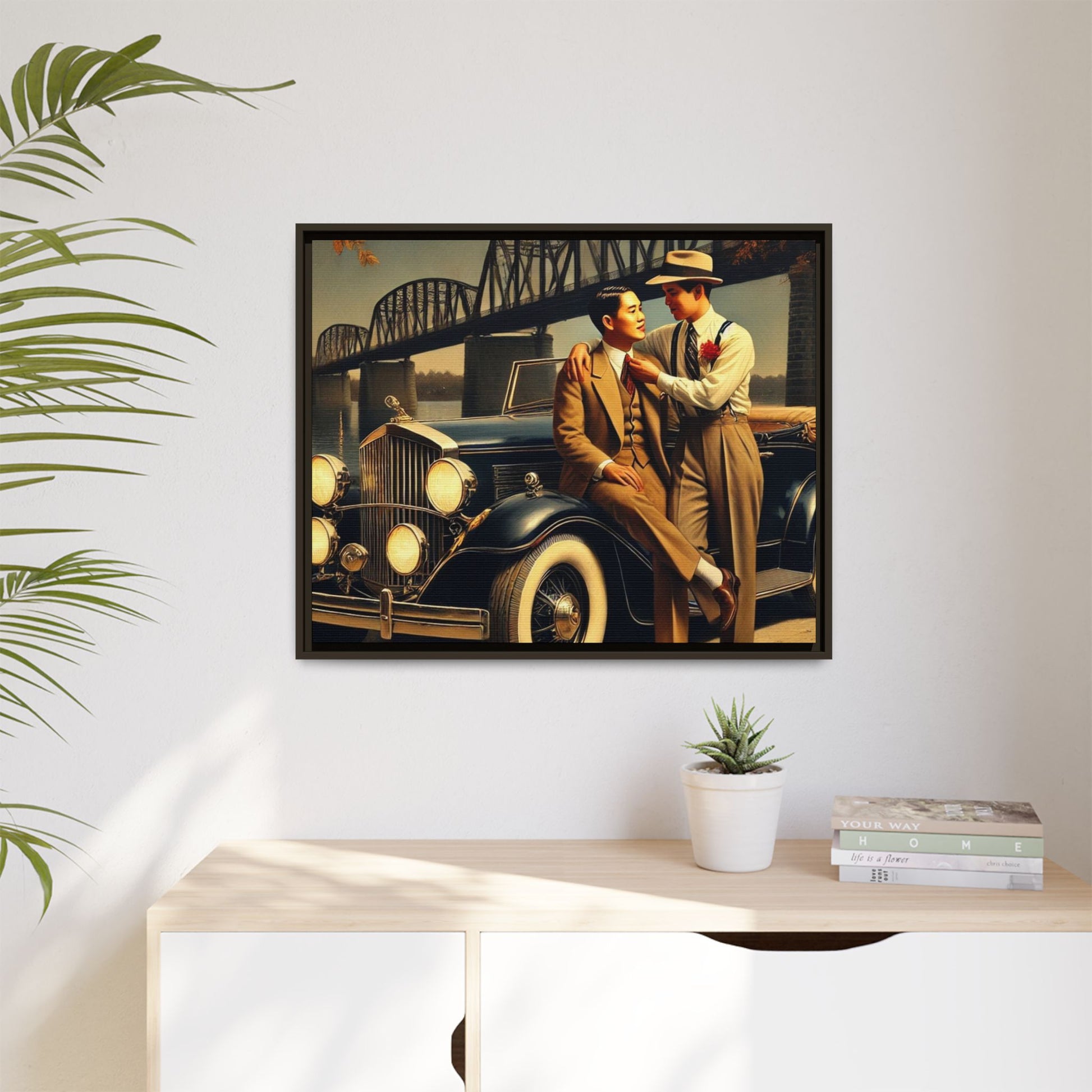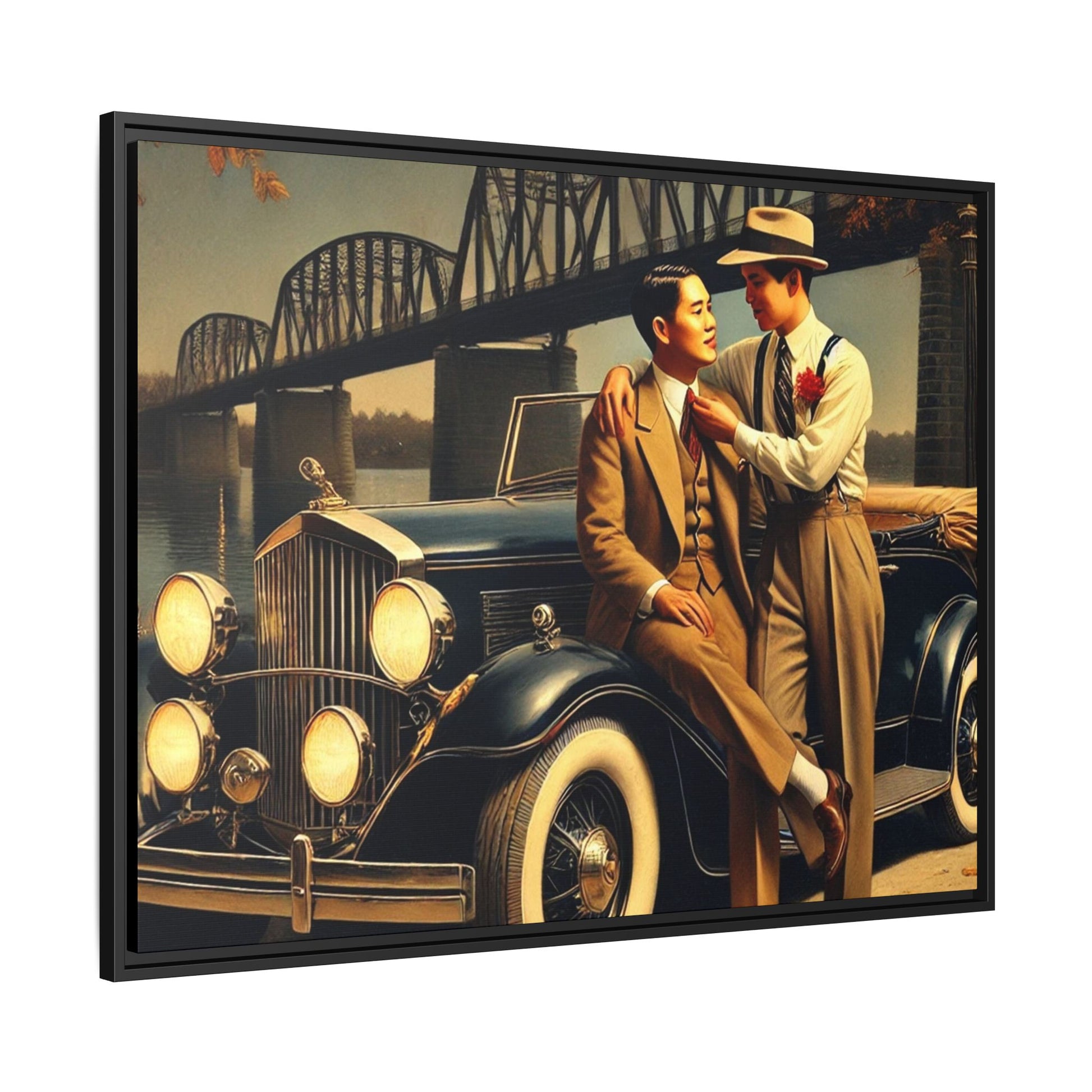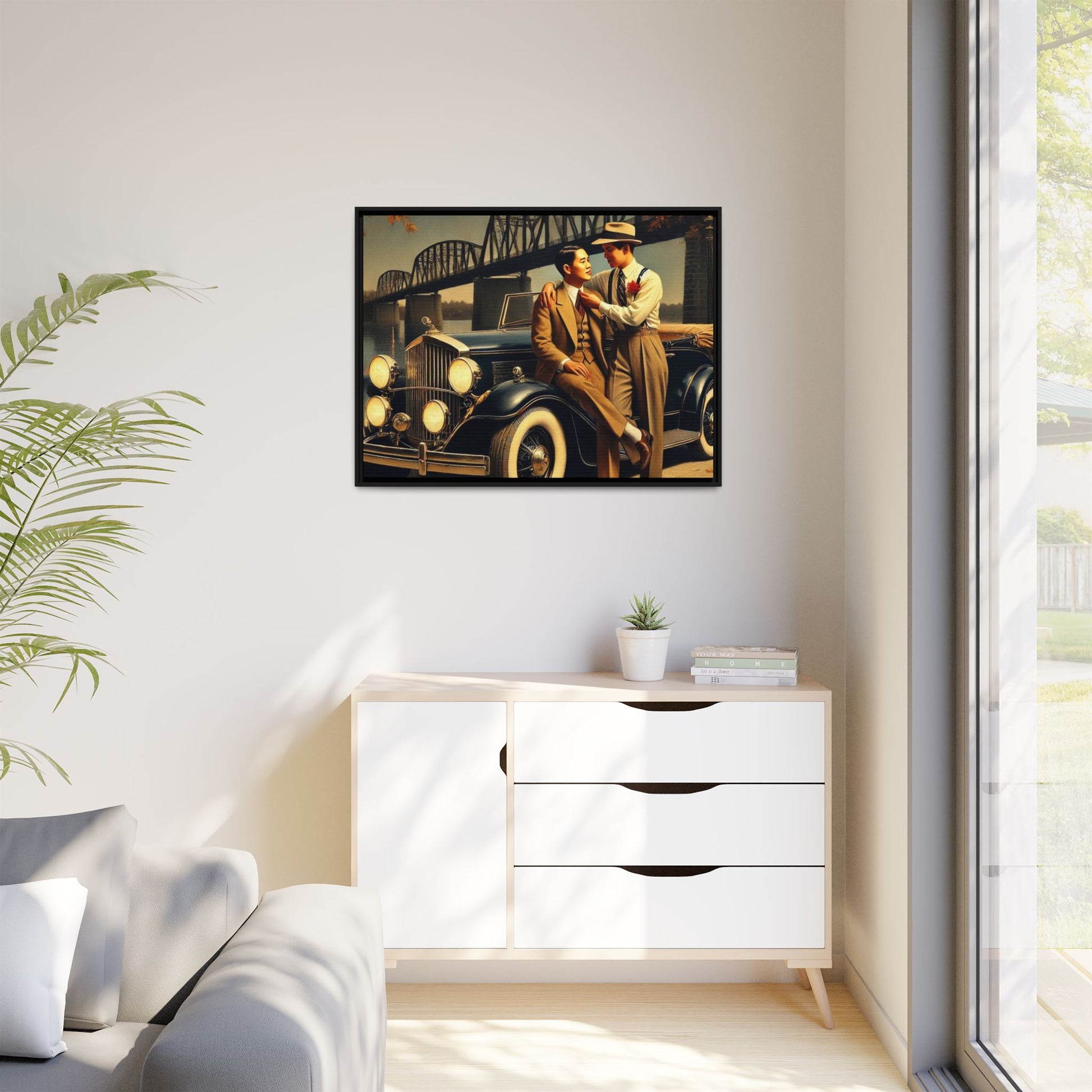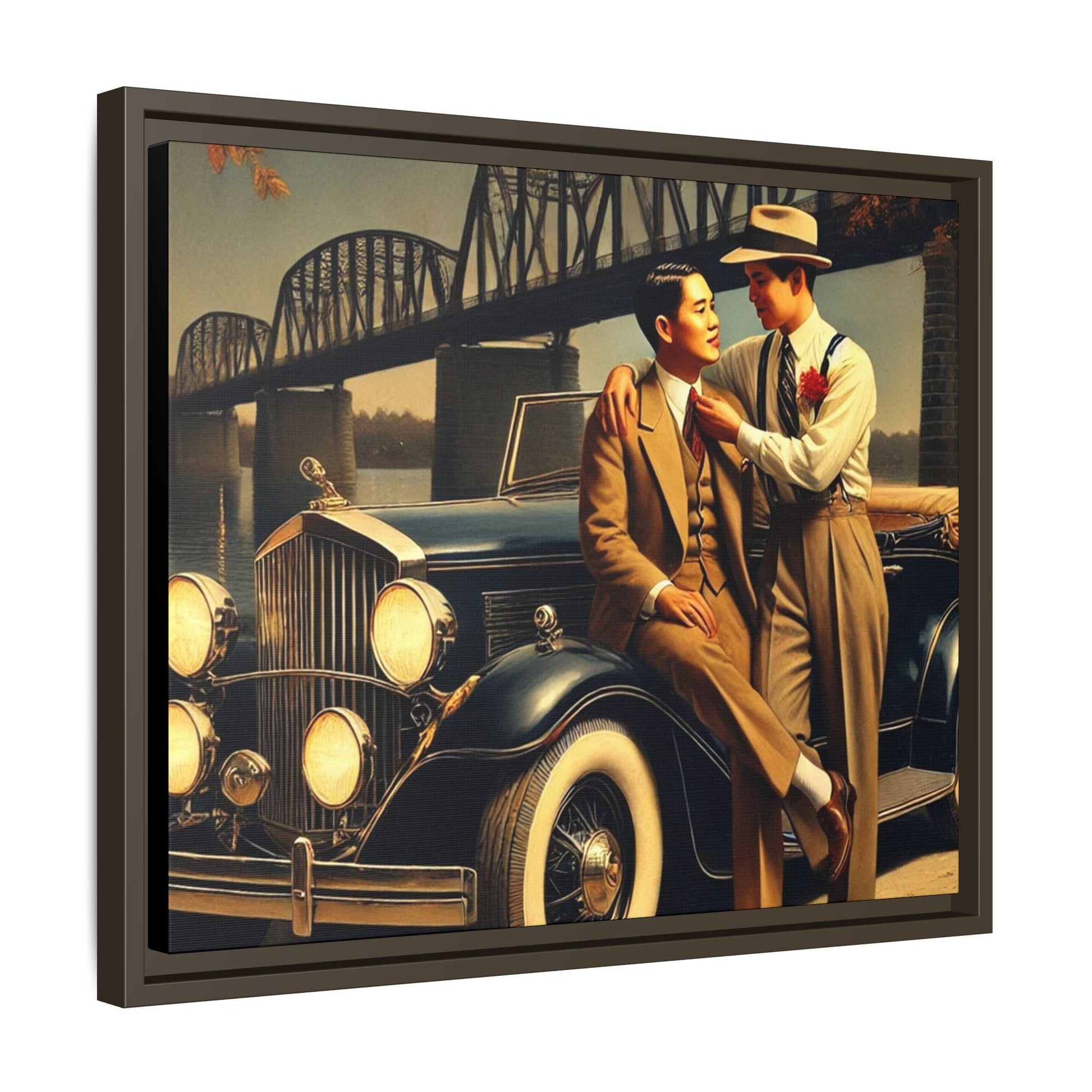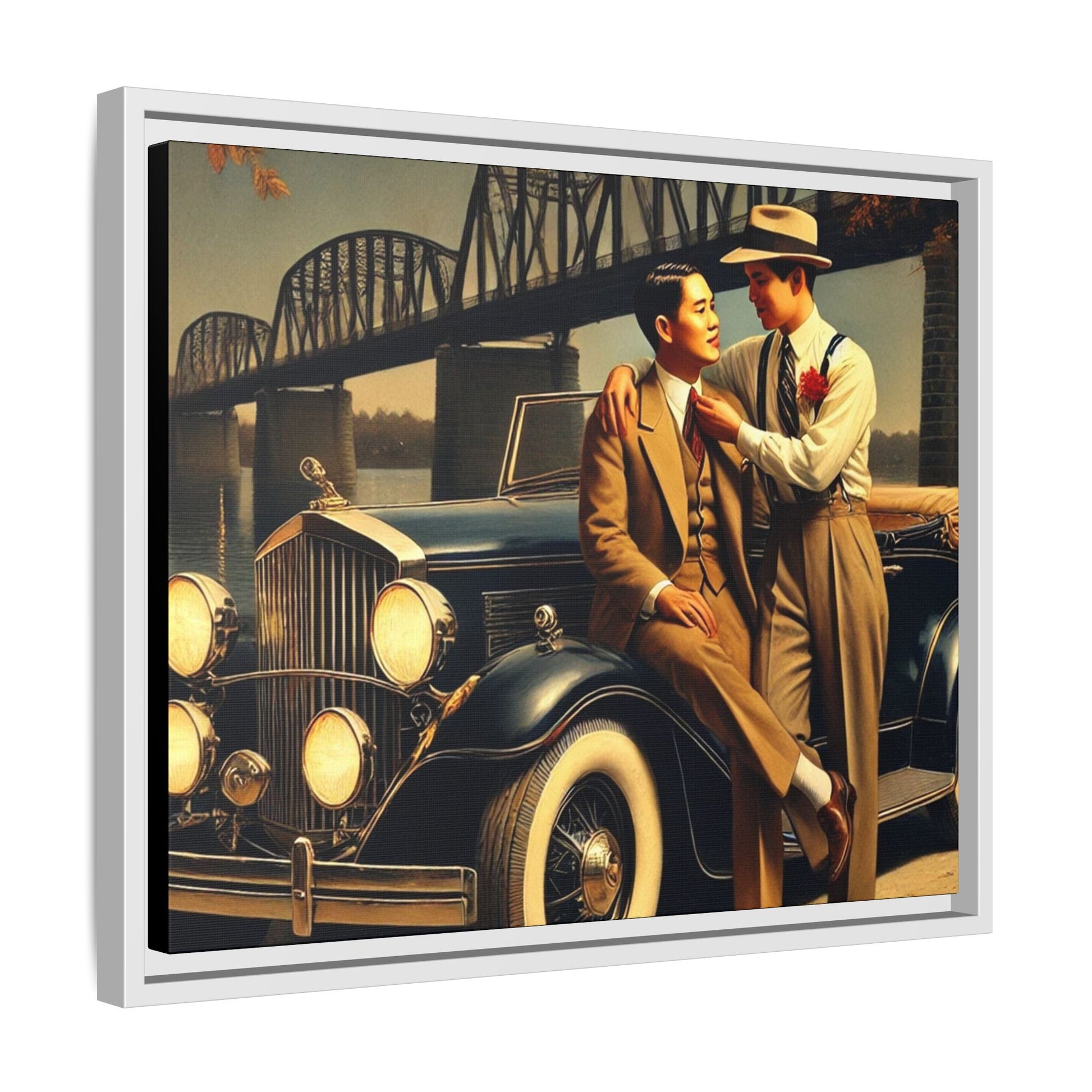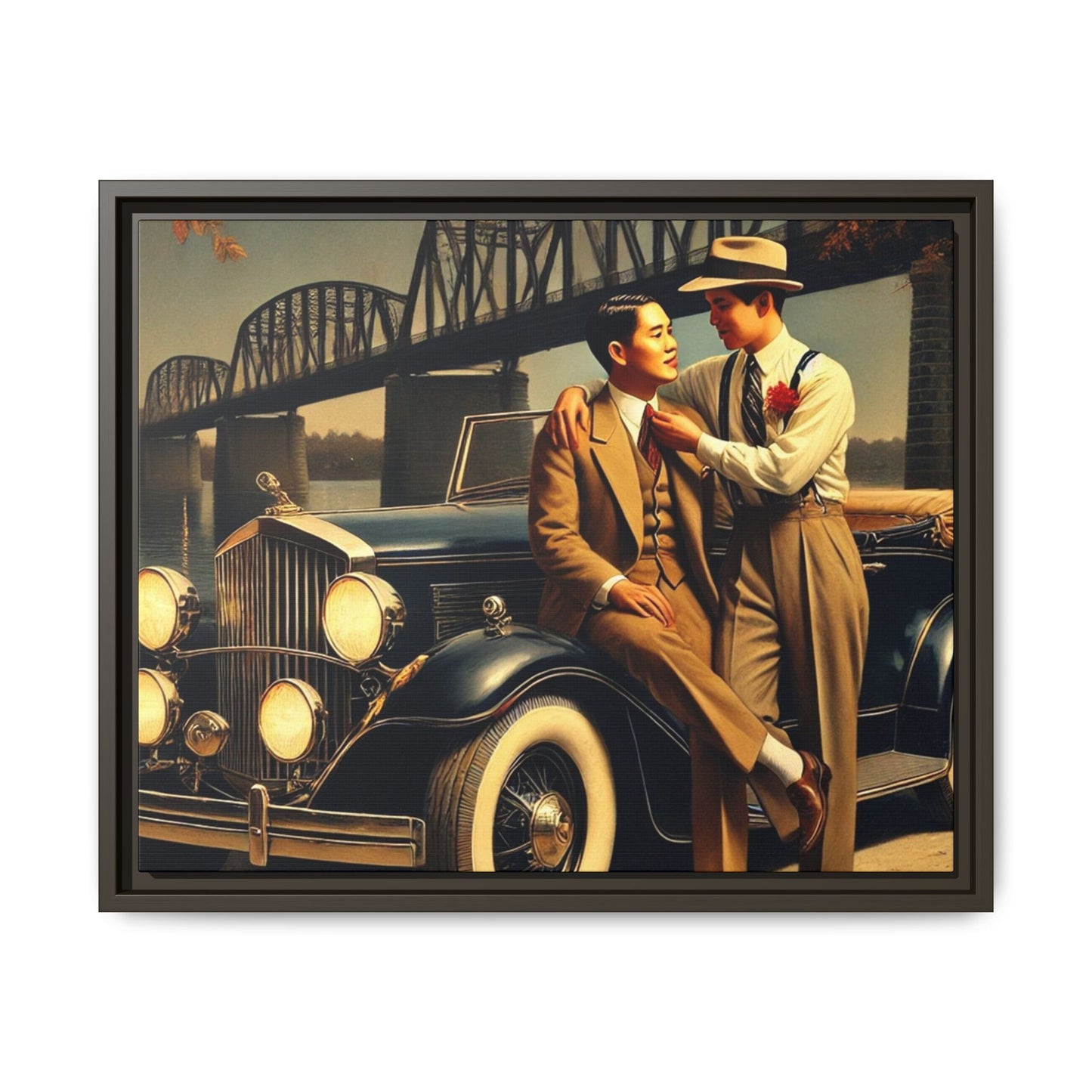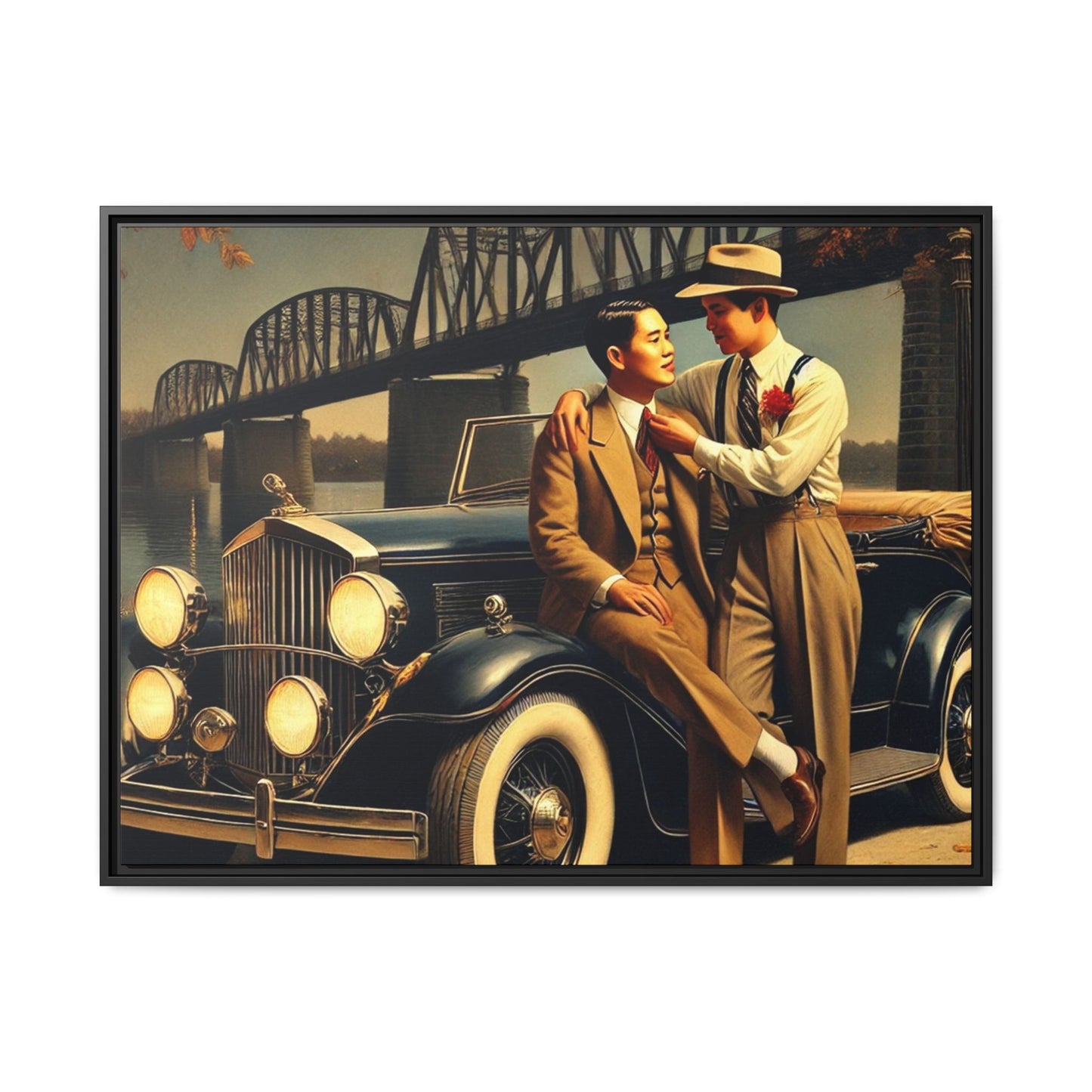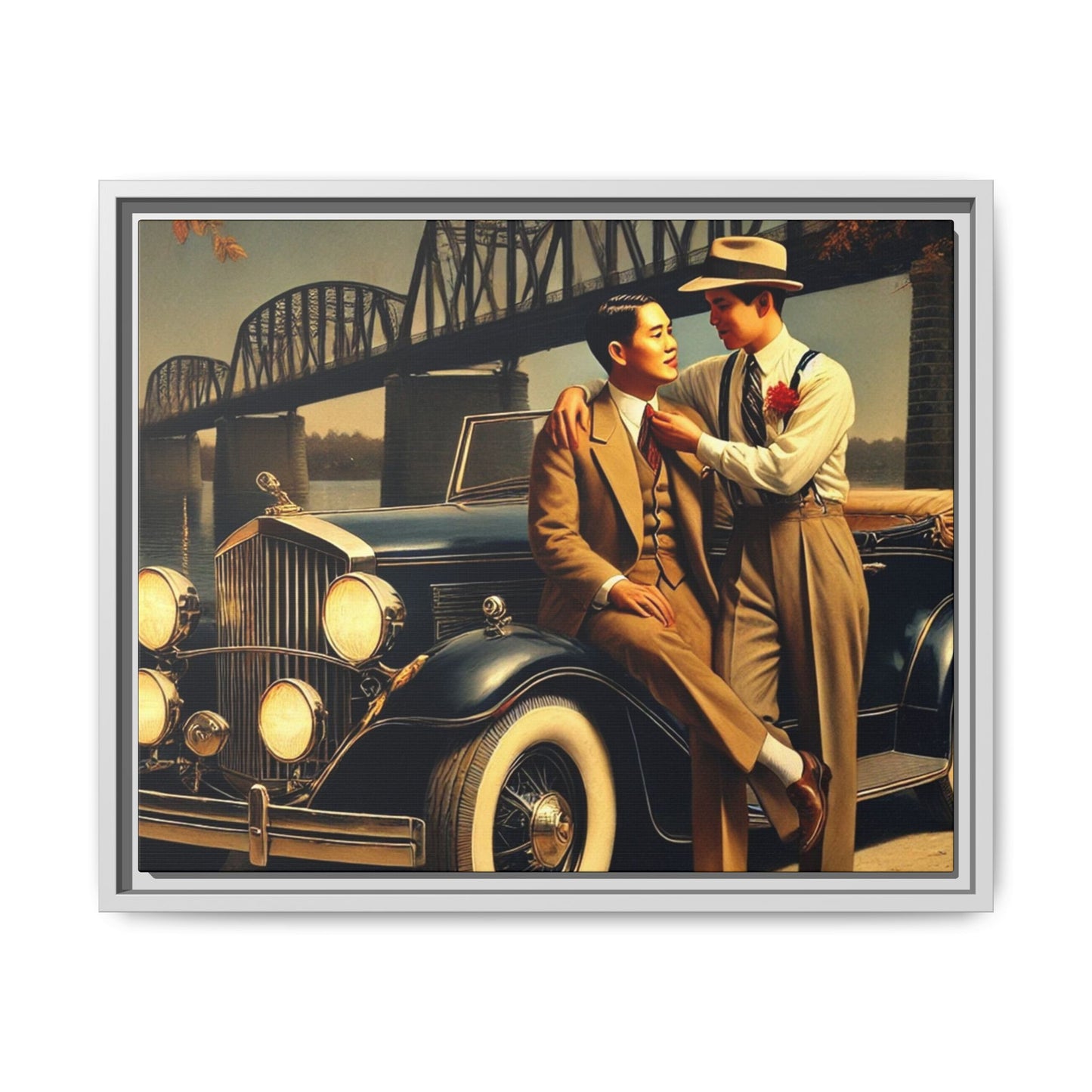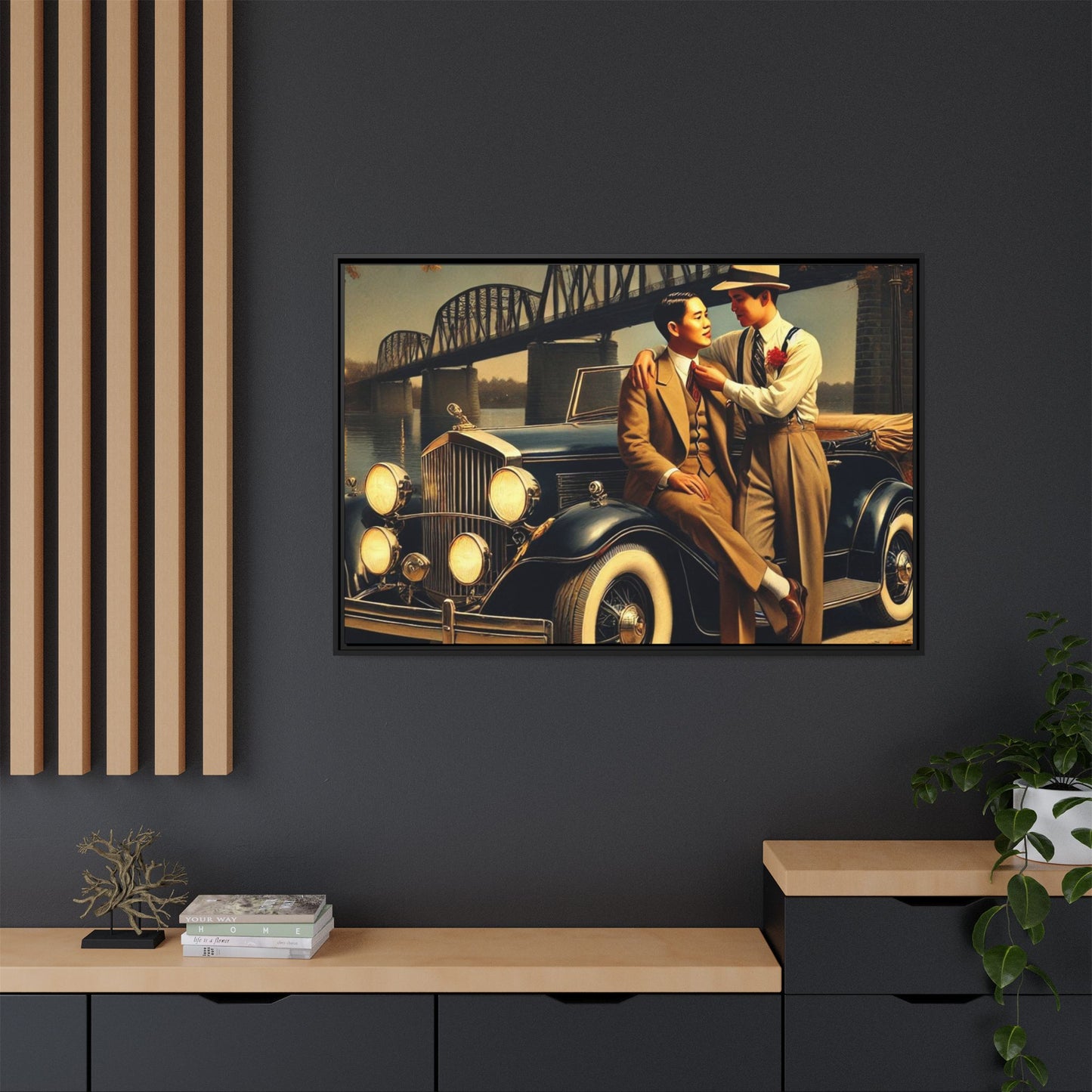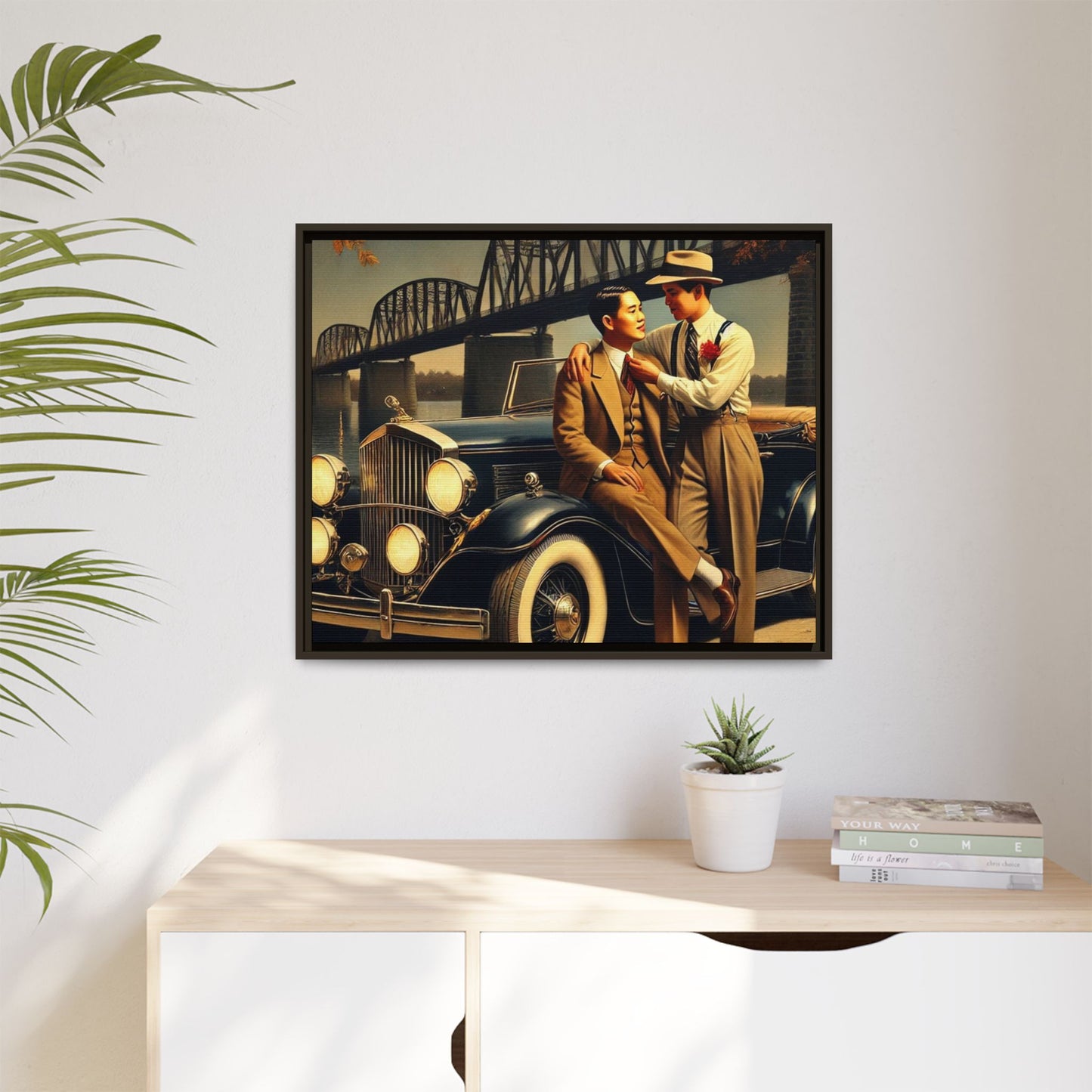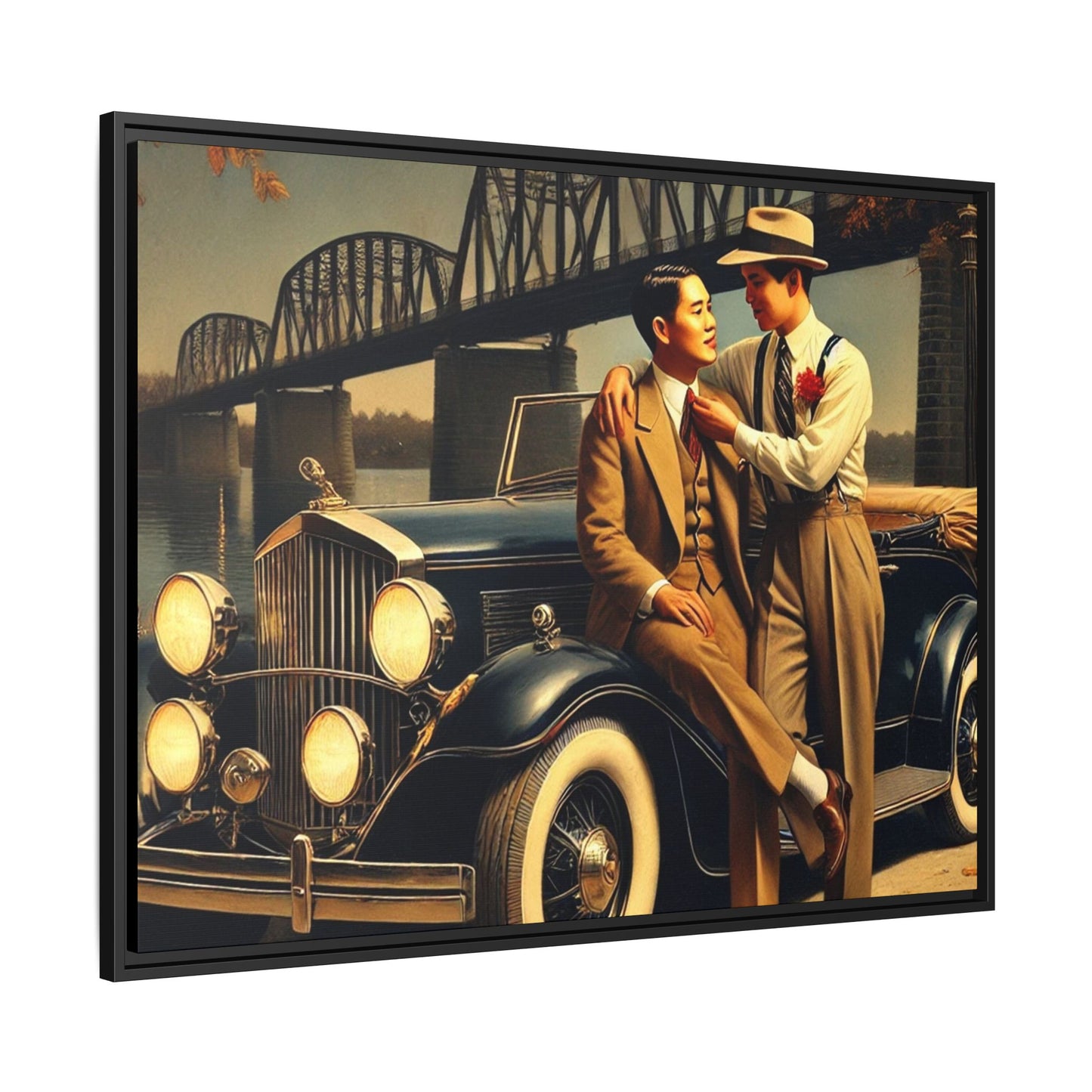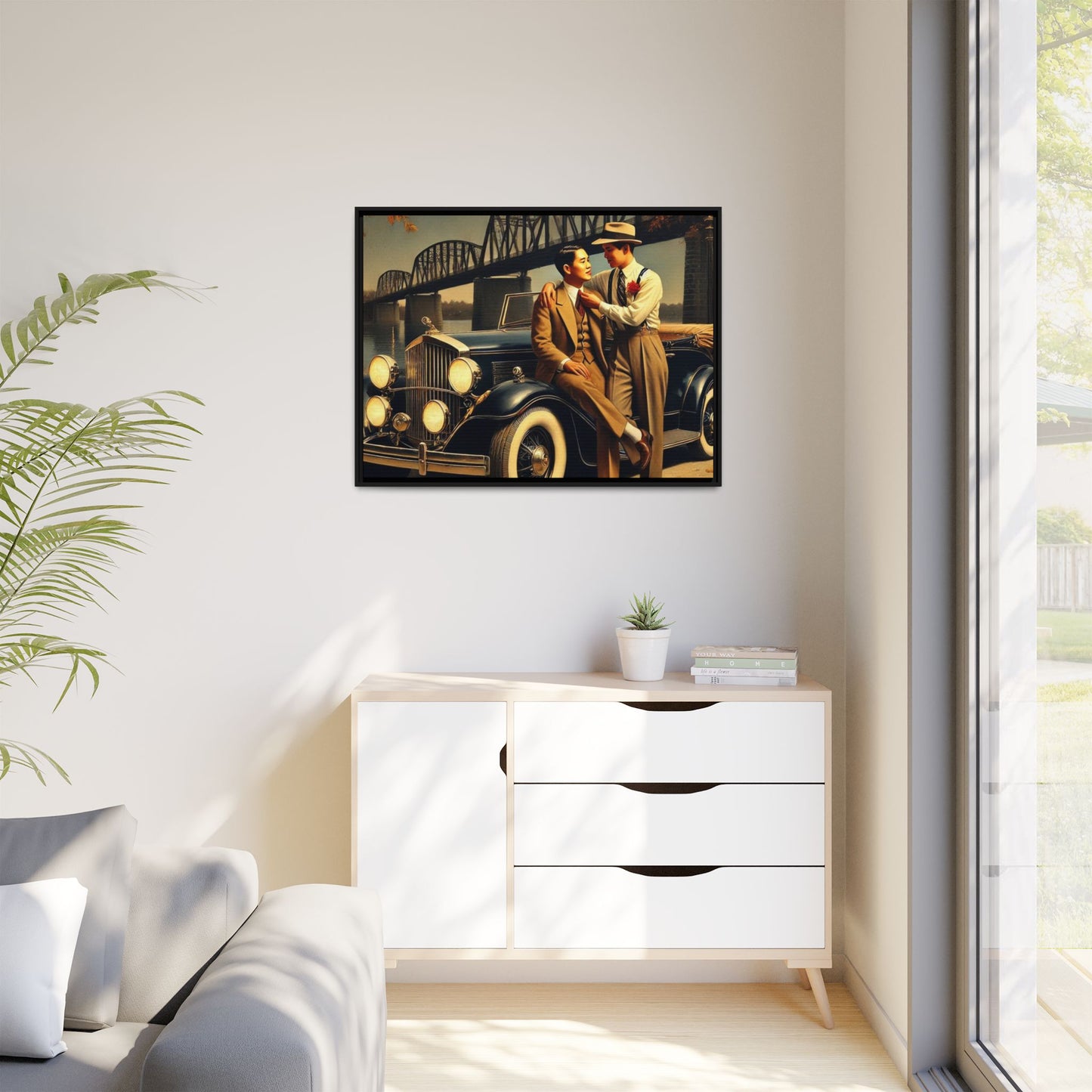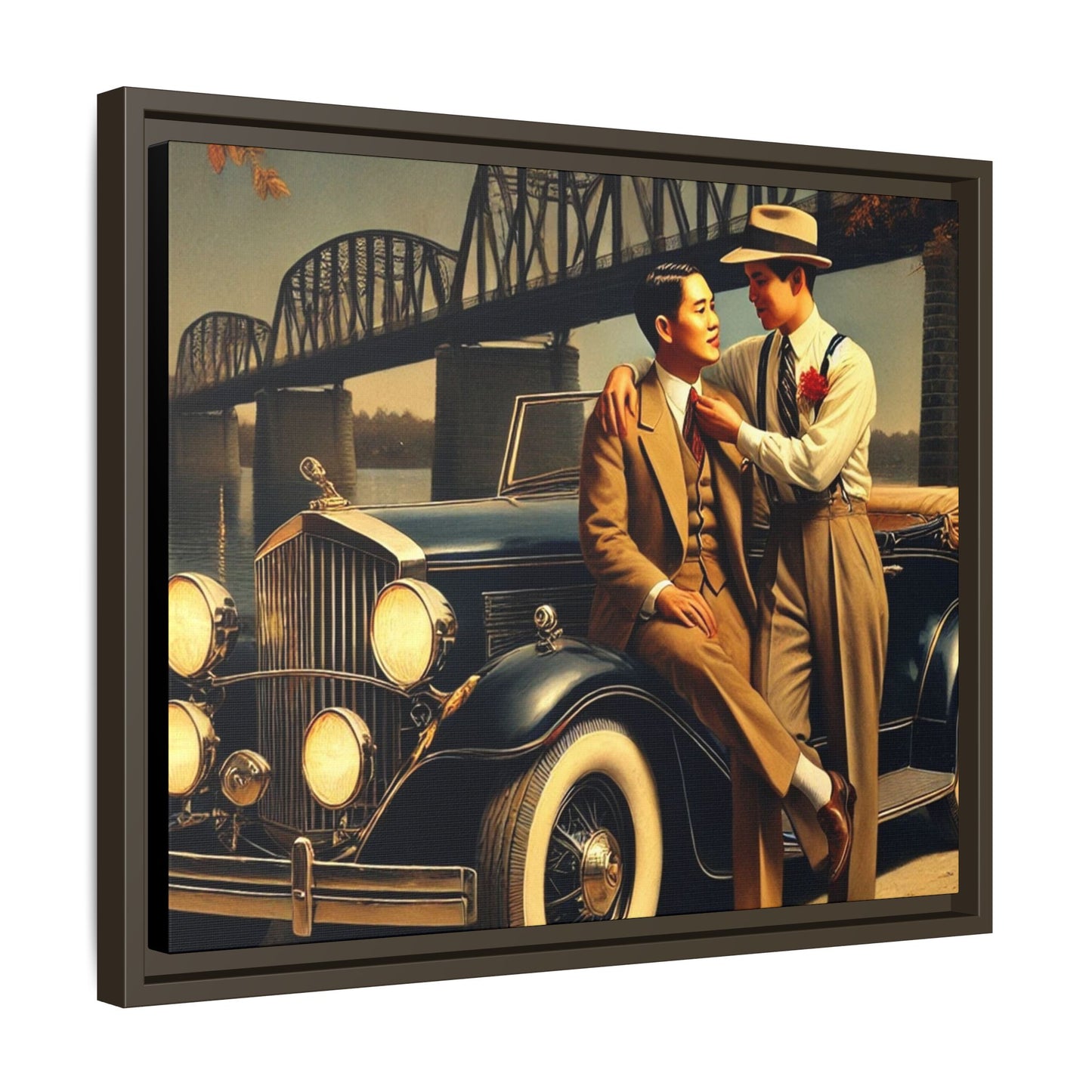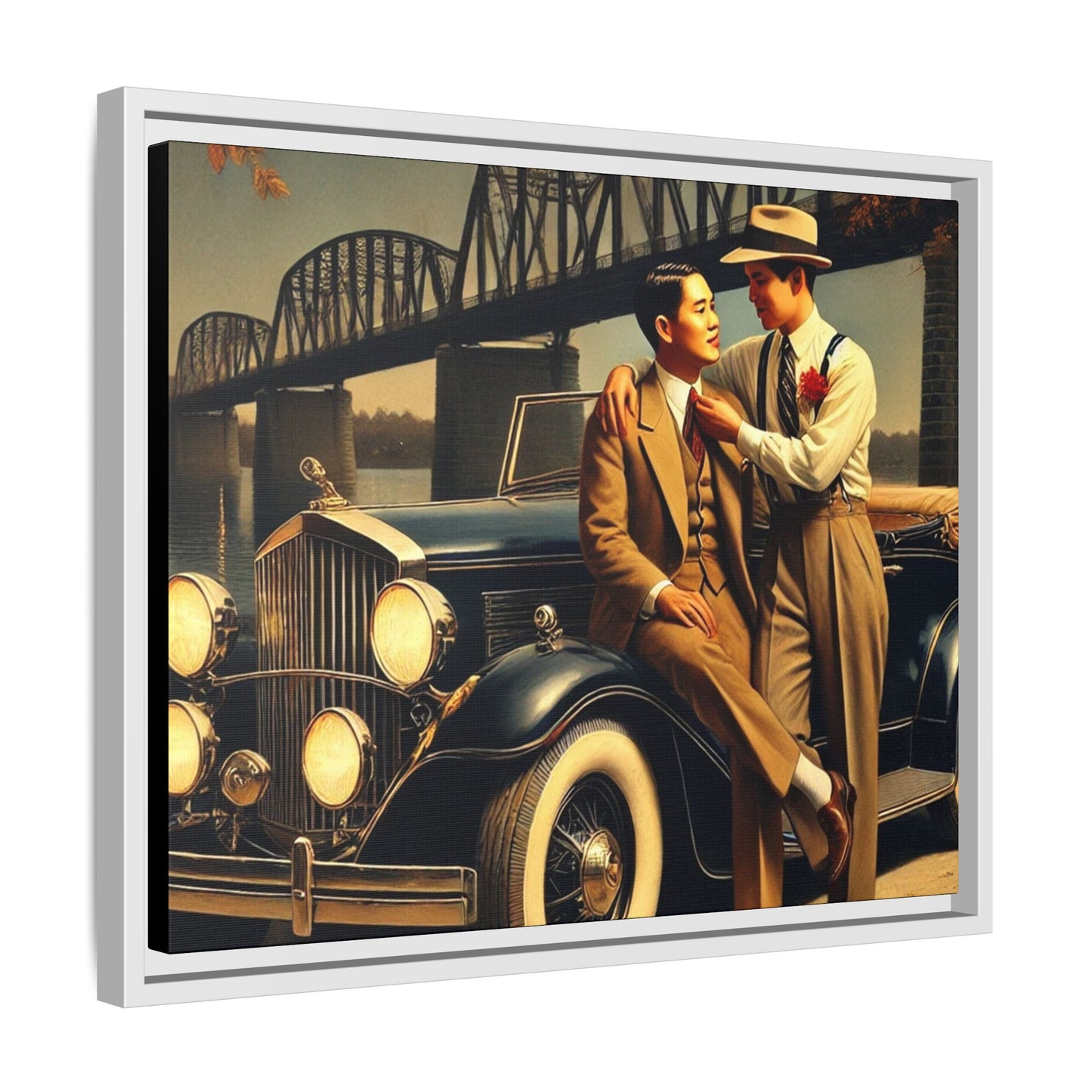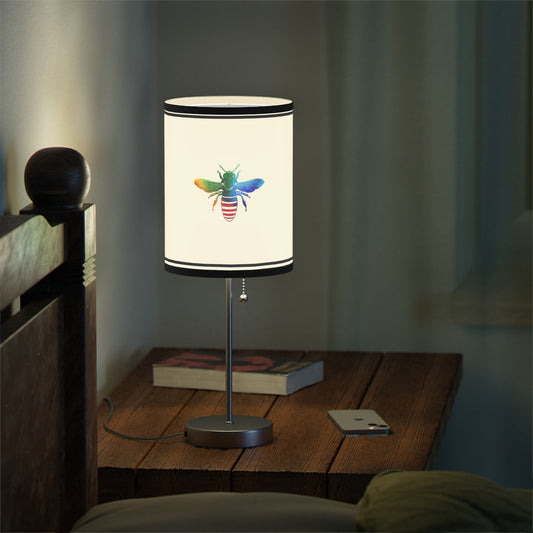This exquisitely detailed vintage-style artwork portrays a gay Asian-American couple in the 1930s, enjoying an intimate moment along the Mississippi River in Eastern Iowa. The couple is impeccably dressed in period-appropriate attire: one man in a tailored three-piece suit seated on the polished fender of a 1930 Packard 745 Deluxe Eight Convertible Coupe, while his partner, dressed in high-waisted trousers, suspenders, and a crisp white shirt adorned with a red boutonniere, tenderly adjusts his tie. The warm glow of vintage streetlights and the reflection of the iconic bridge in the river set a romantic, nostalgic atmosphere, evoking a sense of timeless elegance and love.
The artwork celebrates the resilience and beauty of LGBTQ+ relationships during a period when they were often hidden. The gleaming Packard Coupe, with its luxurious design and sophisticated detailing, symbolizes the prosperity and ambition of the era, contrasting beautifully with the natural fall tones of the leaves scattered on the pavement. This artwork serves as a tribute to historical representation and a celebration of love's universality. Perfect for collectors of vintage Americana, automotive enthusiasts, and inclusivity advocates, it captures the essence of enduring love and the beauty of shared moments in a meticulously crafted historical setting.
This case study series examines the life and work of Midwestern artist Grant Wood. Known for his role in the Regionalist art movement, Wood’s paintings capture the spirit of rural American life with a distinct style inspired by Gothic and Renaissance art. His most iconic works, like American Gothic, reflect a meticulous attention to detail and a flat, decorative approach, showcasing earthy, muted colors—greens, browns, and blues—that echo the landscapes and life of the Midwest. These colors, punctuated occasionally with bright reds or yellows, create a grounded yet nostalgic atmosphere, resonating with the enduring American spirit.
This study is also a tribute to Wood as a queer artist—a truth that he may have kept concealed due to the social and cultural norms of his time. While the term gay didn’t gain mainstream use until the 1960s, queer has since become an inclusive, positive label within the LGBTQ+ community. It embraces a spectrum of identities that defy traditional definitions of sexuality and gender, reflecting the diversity and resilience of those who navigate life outside conventional norms. Reclaiming the term allows us to acknowledge the full breadth of Wood’s identity as part of his legacy.
In exploring Wood’s work, this series imagines what his art might have looked like if he had the freedom to express his authentic self openly, without societal restrictions. It also raises questions about the impact of cultural bias on art preservation—wondering if some pieces that might have reflected same-sex relationships were perhaps destroyed or never created due to the fear of judgment. These case studies honor Grant Wood’s authenticity, celebrating his contributions as a trailblazer in American art and recognizing the need for broader representation in galleries and museums today.
Please note: Slight size variations of +/- 1/8" (3.2mm) may occur due to the production process.
- Cotton and polyester canvas composite with a special proprietary coating
- Sustainably sourced pine wood frame
- Available in multiple sizes and frame colors
- Horizontal, vertical, and square options are available
- Sawtooth hanging hardware included.
